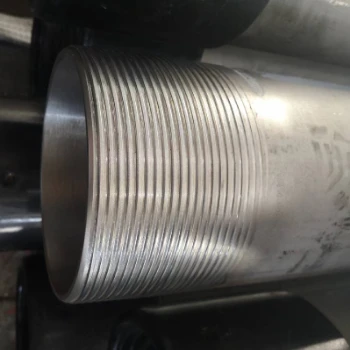- Afrikaans
- Albanian
- Amharic
- Arabic
- Armenian
- Azerbaijani
- Basque
- Belarusian
- Bengali
- Bosnian
- Bulgarian
- Catalan
- Cebuano
- Corsican
- Croatian
- Czech
- Danish
- Dutch
- English
- Esperanto
- Estonian
- Finnish
- French
- Frisian
- Galician
- Georgian
- German
- Greek
- Gujarati
- Haitian Creole
- hausa
- hawaiian
- Hebrew
- Hindi
- Miao
- Hungarian
- Icelandic
- igbo
- Indonesian
- irish
- Italian
- Japanese
- Javanese
- Kannada
- kazakh
- Khmer
- Rwandese
- Korean
- Kurdish
- Kyrgyz
- Lao
- Latin
- Latvian
- Lithuanian
- Luxembourgish
- Macedonian
- Malgashi
- Malay
- Malayalam
- Maltese
- Maori
- Marathi
- Mongolian
- Myanmar
- Nepali
- Norwegian
- Norwegian
- Occitan
- Pashto
- Persian
- Polish
- Portuguese
- Punjabi
- Romanian
- Russian
- Samoan
- Scottish Gaelic
- Serbian
- Sesotho
- Shona
- Sindhi
- Sinhala
- Slovak
- Slovenian
- Somali
- Spanish
- Sundanese
- Swahili
- Swedish
- Tagalog
- Tajik
- Tamil
- Tatar
- Telugu
- Thai
- Turkish
- Turkmen
- Ukrainian
- Urdu
- Uighur
- Uzbek
- Vietnamese
- Welsh
- Bantu
- Yiddish
- Yoruba
- Zulu
stainless steel coupling
Understanding Stainless Steel Couplings The Unseen Heroes of Mechanical Systems
Stainless steel couplings might not be the first mechanical component that comes to mind, but they play a crucial role in various industries, often serving as the unsung heroes that ensure the seamless operation of machinery and equipment. From automotive to manufacturing, these essential fittings facilitate the connection between shafts, allowing for the transfer of rotational motion and power with remarkable efficiency.
What Are Stainless Steel Couplings?
At its core, a coupling is a device used to connect two shafts together at their ends for the purpose of transmitting power. Stainless steel couplings, made from corrosion-resistant stainless steel, offer an array of advantages compared to couplings made from other materials. The inherent properties of stainless steel, such as its strength, durability, and resistance to corrosion, make it an ideal choice for applications in harsh environments, including those exposed to moisture, chemicals, and high temperatures.
Types of Stainless Steel Couplings
There are several types of stainless steel couplings designed to suit different applications
1. Rigid Couplings These couplings provide a solid connection between two shafts and are commonly used when precise alignment is necessary. They can effectively transmit torque without any relative movement between the shafts.
2. Flexible Couplings These couplings accommodate misalignment between connected shafts. They allow a certain degree of flex, making them ideal for applications where vibration or movement may occur.
3. Clamp Couplings A clamp coupling consists of two hubs and a connecting element. This design allows for ease of installation and maintenance since it can be easily disassembled without removing the shafts.
4. Bellows Couplings Made from a flexible bellows section, these couplings can absorb shock and reduce vibrations while effectively transmitting torque. They are ideal for high-precision applications.
stainless steel coupling

Benefits of Using Stainless Steel Couplings
1. Corrosion Resistance One of the primary advantages of stainless steel couplings is their resistance to rust and other forms of corrosion. This characteristic makes them suitable for marine, chemical processing, and food industry applications.
2. High Strength-to-Weight Ratio Stainless steel exhibits a high strength-to-weight ratio, which means that these couplings can handle heavy loads without adding excessive weight to the system.
3. Longevity and Low Maintenance Due to their robust construction and durable materials, stainless steel couplings typically require less maintenance than those made from other materials. They are less prone to wear and tear, translating to cost savings over time.
4. Versatility Stainless steel couplings can be designed to meet specific operational requirements, making them versatile enough for use in a range of applications, from pumps and motors to conveyors and industrial machinery.
Applications in Various Industries
The applications of stainless steel couplings can be found in almost every sector. In the automotive industry, they are used in drivetrain assemblies to connect power transmission components. In the manufacturing sector, stainless steel couplings are vital in machinery that requires precise alignment to operate efficiently. The food processing industry employs these couplings in equipment where hygiene and cleanliness are paramount, as stainless steel is easy to clean and does not harbor bacteria.
Conclusion
In summary, stainless steel couplings are an indispensable component in the world of machinery and mechanical systems. Their ability to withstand harsh environments while providing reliable performance makes them a preferred choice in many industries. Understanding the types and benefits of stainless steel couplings can empower engineers and manufacturers to select the best options for their unique applications, ensuring optimal performance and longevity in their equipment. As technologies evolve, the role of stainless steel couplings will continue to be critical, underscoring the need for quality and reliable engineering solutions.
-
Tubing Pup Joints: Essential Components for Oil and Gas OperationsNewsJul.10,2025
-
Pup Joints: Essential Components for Reliable Drilling OperationsNewsJul.10,2025
-
Pipe Couplings: Connecting Your World EfficientlyNewsJul.10,2025
-
Mastering Oilfield Operations with Quality Tubing and CasingNewsJul.10,2025
-
High-Quality Casing Couplings for Every NeedNewsJul.10,2025
-
Boost Your Drilling Efficiency with Premium Crossover Tools & Seating NipplesNewsJul.10,2025







